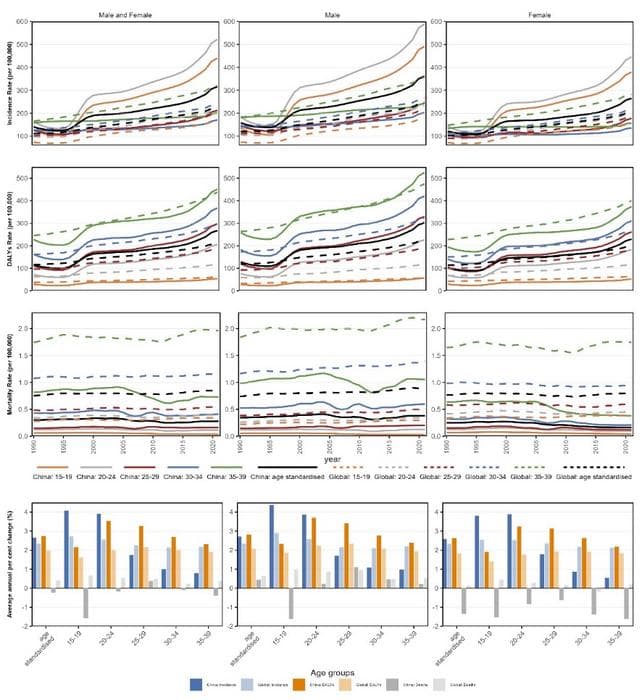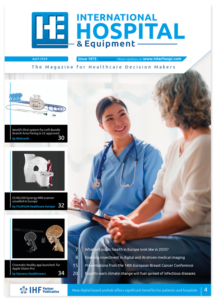Early-onset type 2 diabetes surges among Chinese youth
A comprehensive analysis of early-onset type 2 diabetes (T2D) in China reveals the age-standardised incidence rate has more than doubled between 1990 and 2021, highlighting an urgent public health challenge. The study, published in Health Data Science in December 2024, found particularly concerning trends among adolescents and young males.

Scientists from Peking University analyzed the proportion of attributable risk factors contributing to early-onset T2D and T2D DALYs in China in 2021, highlighting the role of high BMI and environmental factors. © Siyan Zhan, Peking University
Rising incidence and burden of disease
Researchers from Peking University analysed data from the Global Burden of Disease Study 2021, examining trends in early-onset T2D among individuals aged 15-39 years. Their findings show the age-standardised incidence rate increased from 140.20 per 100,000 in 1990 to 315.97 per 100,000 in 2021, with an average annual percentage change of 2.67%.
The disability-adjusted life years (DALYs) similarly rose from 116.29 to 267.47 per 100,000 during this period. While mortality rates showed a slight decline, the overall disease burden continued to grow substantially.
Gender disparities and age-specific trends
The research revealed significant gender differences, with males experiencing consistently higher rates across all metrics. By 2021, males showed notably higher age-standardised rates compared to females for incidence (361.21 vs 265.51 per 100,000), DALYs (302.35 vs 229.74 per 100,000), and mortality (0.38 vs 0.16 per 100,000).
The 15-19 age group demonstrated the fastest increase in incidence, with an average annual percentage change of 4.08%. Professor Siyan Zhan from Peking University’s Department of Epidemiology and Biostatistics noted this concerning trend among younger populations.
Environmental and lifestyle factors
The study identified high body mass index (BMI) as the primary contributor to early-onset T2D DALYs, accounting for 59.85% in 2021—a significant increase from 40.08% in 1990. Ambient particulate matter pollution emerged as the second most significant risk factor, contributing 14.77% to the disease burden.
Other notable risk factors included diets high in red meat (9.33%), smoking (8.94%), and diets low in whole grains (7.89%). The contribution of environmental pollution has shown a marked increase over the study period.
Prevention and intervention implications
The findings underscore the need for targeted interventions, particularly for males and younger age groups. The researchers emphasise the importance of implementing comprehensive public health strategies focusing on obesity prevention, environmental health improvements, and dietary interventions.
The study’s results suggest that current diabetes screening guidelines in China, which primarily target individuals over 40, may need revision to address the growing burden of early-onset cases.
Public health response
The research team advocates for strengthened prevention and management strategies, especially interventions targeting younger age groups. The findings indicate that while progress has been made in reducing mortality, there remains a pressing need to address the rising incidence and disease burden.
The study provides critical evidence for policymakers and healthcare professionals to develop targeted interventions that consider both demographic factors and environmental influences in addressing this escalating health challenge.
Reference:
Yang, J., Deng, S., Zhao, H., et. al. (2024). The Burden of Type 2 Diabetes in Adolescents and Young Adults in China: A Secondary Analysis from the Global Burden of Disease Study 2021. Health Data Science, 4, Article 0210. https://doi.org/10.34133/hds.0210

